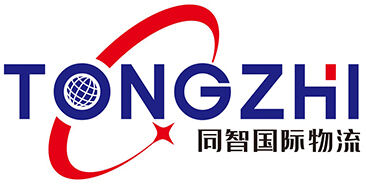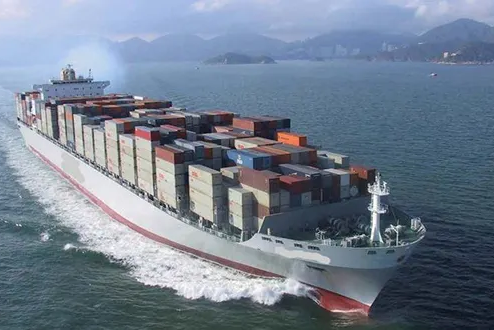El transporte de contenedores es la columna vertebral del comercio global, permitiendo el movimiento eficiente y seguro de mercancías en todo el mundo. Con la creciente demanda de comercio internacional, las empresas deben comprender los matices del transporte de contenedores para optimizar sus operaciones logísticas. Este artículo explora las mejores prácticas y consideraciones clave para maximizar la eficiencia en el transporte de contenedores.
Entendiendo el Transporte de Contenedores
El transporte marítimo de contenedores implica transportar bienes en grandes contenedores estandarizados. Estos contenedores vienen en varios tamaños, siendo los más comunes los de 20 pies y 40 pies. La estandarización permite la transferencia fluida entre barcos, camiones y trenes, lo que lo convierte en un modo de transporte versátil y eficiente.
Principales beneficios del transporte marítimo de contenedores
Eficiencia: Los contenedores están diseñados para un manejo y apilamiento fácil, lo que acelera el proceso de carga y descarga en los puertos. Esta eficiencia se traduce en tiempos de tránsito más rápidos y costos reducidos.
Seguridad: Los bienes transportados en contenedores son menos susceptibles a daños y robos. La robusta construcción de los contenedores proporciona una excelente protección contra los elementos y posibles hurtos.
Efectividad costo-beneficio: El transporte marítimo de contenedores es generalmente más rentable que otros modos de transporte, especialmente para envíos internacionales a larga distancia. La capacidad de consolidar múltiples envíos en un solo contenedor reduce aún más los costos.
Versatilidad: Los contenedores pueden transportar una amplia variedad de mercancías, desde materias primas y maquinaria hasta productos perecederos y bienes terminados. Los contenedores especializados, como los contenedores refrigerados (reefers), atienden necesidades específicas como el control de temperatura.
Mejores Prácticas para el Envío en Contenedores
Elige el Tipo de Contenedor Adecuado
Seleccionar el tipo de contenedor adecuado es crucial para garantizar el transporte seguro y eficiente de las mercancías. Los contenedores secos estándar son adecuados para la mayoría de los tipos de carga, pero las empresas deben considerar contenedores especializados para necesidades específicas:
Contenedores Refrigerados (Reefers): Para mercancías perecederas que requieren control de temperatura.
Contenedores de Techo Abierto: Para cargas sobredimensionadas que no caben en un contenedor estándar.
Contenedores de Plataforma Plegable: Para artículos pesados y voluminosos como maquinaria y vehículos.
Optimizar la utilización de contenedores
Maximizar el uso del espacio disponible dentro de un contenedor puede reducir significativamente los costos de envío. Las empresas deben:
Empaque y apila adecuadamente los bienes: Asegúrate de que los bienes estén empacados firmemente y de manera segura para evitar desplazamientos durante el traslado.
Utiliza palets y tablones: Facilita un manejo fácil y un uso eficiente del espacio.
Distribuye equitativamente el peso: Distribuye el peso de manera uniforme para mantener la estabilidad y prevenir daños.
Implementa Sistemas de Seguimiento Avanzados
El seguimiento y monitoreo en tiempo real de los envíos proporciona valiosas insights y mejora la visibilidad durante todo el proceso de envío. Los sistemas de seguimiento avanzados ofrecen:
Actualizaciones de Ubicación en Tiempo Real: Mantén informadas a las empresas sobre la ubicación y estado de sus envíos.
Monitoreo de Condiciones: Asegúrate de que los bienes sensibles a la temperatura permanezcan dentro del rango requerido.
Análisis Predictivo: Anticipa posibles retrasos y optimiza las rutas para una entrega más rápida.
Asegura el Cumplimiento de las Normativas
El cumplimiento de las regulaciones de envío internacional es esencial para evitar retrasos y multas. Las empresas deben:
Manténgase Informado sobre las Regulaciones Comerciales: Manténgase al día con las leyes de importación/exportación y los requisitos aduaneros para cada destino.
Prepare Documentación Acurada: Asegúrese de que todos los documentos necesarios, como conocimientos de embarque, certificados de origen y declaraciones aduaneras, estén correctamente llenados y presentados a tiempo.
Trabaje con Corredores Aduaneros Experimentados: Facilite un trámite aduanero fluido y minimice el riesgo de problemas de cumplimiento.
Aproveche la Tecnología para una Mayor Eficiencia
La tecnología juega un papel crítico en la optimización de las operaciones de envío de contenedores. Las empresas deben adoptar:
Software de Gestión de Envíos: Simplifique los procesos de reserva, documentación y seguimiento.
Sistemas Automatizados de Manejo de Carga: Acelere las operaciones de carga y descarga en los puertos.
Tecnología Blockchain: Mejore la transparencia y seguridad en la cadena de suministro proporcionando un registro inmutable de transacciones y movimientos.
Consideraciones Clave para el Envío de Contenedores
Gestión de los costes
Los costos de envío pueden impactar significativamente la línea de fondo de un negocio. Las estrategias clave para gestionar los costos incluyen:
Consolidación de Envíos: Combina múltiples envíos en un solo contenedor para beneficiarte de economías de escala.
Negociación de Contratos: Asegura tarifas y términos favorables con líneas de envío y forwarders de carga.
Optimización de Rutas: Selecciona las rutas más eficientes y económicas para minimizar los tiempos de tránsito y reducir el consumo de combustible.
Gestión de Riesgos
Gestionar los riesgos asociados con el transporte en contenedores es esencial para garantizar la entrega segura y oportuna de los bienes. Considera lo siguiente:
Cobertura de Seguro: Protege contra posibles
pérdidas debido a daños, robos o retrasos.
Planificación de Contingencias: Desarrolla planes para abordar interrupciones inesperadas, como huelgas en puertos o desastres naturales.
Auditorías Regulares: Realiza auditorías de los procesos de envío y socios para identificar y mitigar riesgos.
Prácticas de Sostenibilidad
La sostenibilidad está cobrando cada vez más importancia en la logística global. Las empresas pueden adoptar prácticas ecológicas como:
Uso de Buques Eficientes en el Uso de Combustible: Opta por líneas de envío que utilicen buques modernos y eficientes en el uso de combustible para reducir las emisiones de carbono.
Implementación de Soluciones de Embalaje Verdes: Usa materiales de embalaje reciclables y biodegradables para minimizar el impacto ambiental.
Compensación de Emisiones de Carbono: Participa en programas de compensación de carbono para neutralizar la huella ambiental de las actividades de envío.
Conclusión
El transporte marítimo de contenedores es un componente vital del comercio internacional, ofreciendo eficiencia, seguridad y costo-efectividad. Al implementar mejores prácticas como seleccionar el tipo de contenedor adecuado, optimizar el uso del contenedor, aprovechar sistemas de seguimiento avanzados, asegurar el cumplimiento regulatorio y adoptar tecnología, las empresas pueden maximizar los beneficios del transporte marítimo de contenedores. Además, gestionar costos, mitigar riesgos y adoptar prácticas sostenibles son cruciales para mantener una ventaja competitiva en el mercado global.







































